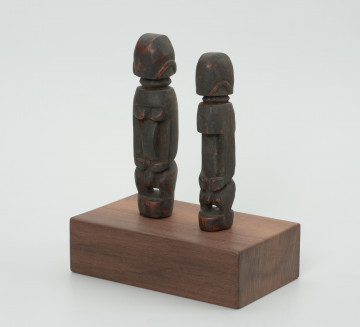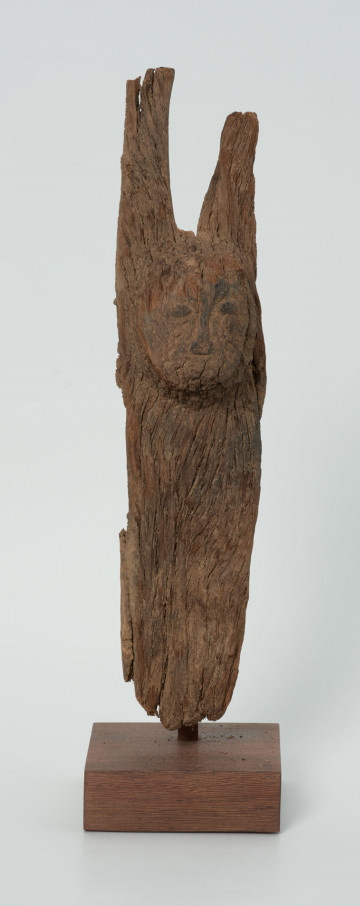
Divination set
między 1951 — 2000
National Museum in Szczecin
Part of the collection: Collection of Dogonian art
The Dogon live in the Bandiagara, Douentza and Bankass regions, in the south-central part of the Republic of Mali. A few Dogon settlements can also be found in the northern part of Burkina Faso, near the border with Mali. The number of people is currently estimated at 500-600 thousand. In everyday life, the Dogon speak a language called Dogo-So, traditionally included in the group of Voltaic languages (Gur) belonging to the Niger-Congo subfamily of the great Congo-Kordofan family. The people inhabit several hundred villages, dominated by typical thatched clay granaries. The largest concentration of villages is along the 150 km long fault line of the Bandiagara Escarpment. The villages are located on the massif itself (Plateau), the Seno and Gondo Plains (spreading around it), and the so-called debris, i.e. stony slopes and ravines located at the foot of the massif. According to oral tradition, the Dogon came to the area they currently inhabit from the mythical country of Mande around the 15th century. According to some researchers, it is situated 700 km to the west of the Bandiagara Escarpment, the actual Mande region. They decided to leave their ancient homeland after their ancestor Lebe was the first of the Dogon to experience death. After a long march, they reached the southwestern edge of the Bandiagara Escarpment, near the present-day village of Kani-Bonzon. The massif was inhabited by people whom the Dogon called Tellem. The Dogon regard the Tellem as their teachers and masters and attribute to them supernatural qualities such as the ability to fly. The Tellem left their settlements, giving way to the agricultural Dogon.
Ewa Prądzyńska
Author / creator
Dimensions
cały obiekt: height: 28,4 cm, width: 5 cm
Object type
figure
Creation time / dating
Creation / finding place
Identification number
Location / status

między 1951 — 2000
National Museum in Szczecin

między 1951 — 2000
National Museum in Szczecin

między 1901 — 1950
National Museum in Szczecin
DISCOVER this TOPIC
National Museum in Lublin
DISCOVER this PATH
Educational path